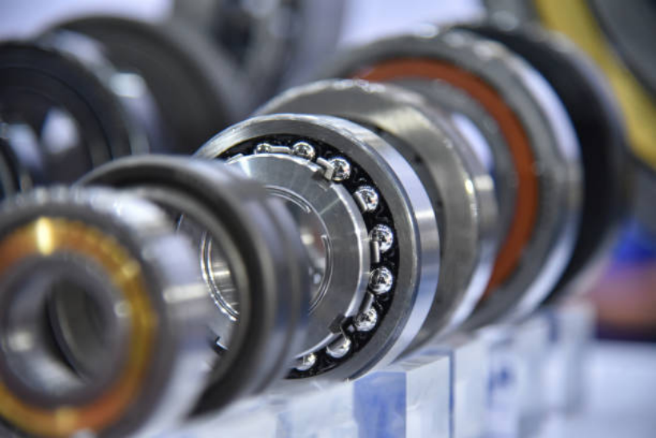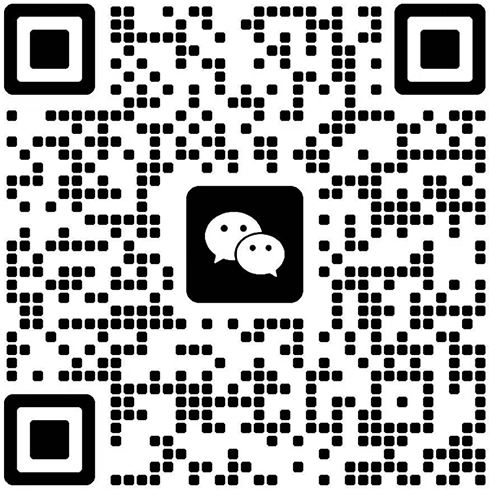चार-बिंदु संपर्क गेंद असर बनाम कोणीय संपर्क असर: कौन सा चुनना है?
2025-09-12

सही बेयरिंग चुनना सिर्फ एक छोटा विकल्प नहीं है। यह तय कर सकता है कि क्या आपकी मशीन वर्षों तक सुचारू रूप से काम करती है या सबसे खराब समय पर रुकती है। दो लोकप तो कौन सा आपके लिए बेहतर है? चलो इसे स्पष्ट रूप से तोड़ते हैं।
चार बिंदु और कोणीय संपर्क गेंद असर
चार बिंदु संपर्क गेंद असर क्या है?
ए चार बिंदु संपर्क गेंद असर एक स्मार्ट डिजाइन के साथ एकल-पंक्ति कोणीय संपर्क असर का एक प्रकार है। आंतरिक और बाहरी अंगूठियों को दो भागों में विभाजित किया जाता है। नालियां आकार की हैं ताकि प्रत्येक गेंद चार स्पॉट पर रेसवे को छूती हो। इसके कारण, यह दोनों दिशाओं में अक्षीय भार और छोटे आकार में रेडियल भार को संभाल सकता है।
मुख्य बिंदु:
-
अक्षीय भार दोनों तरीकों और रेडियल भार को एक साथ प्रबंधित करता है
-
जगह बचाता है क्योंकि एक असर दो का काम करता है
-
तंग स्थानों के लिए महान जहां मजबूत प्रदर्शन महत्वपूर्ण है
एक कोणीय संपर्क गेंद असर क्या है?
कोणीय संपर्क गेंद असर 15 डिग्री, 25 डिग्री या 40 डिग्री जैसे संपर्क कोणों के साथ बनाए गए हैं। वे अक्सर रेडियल और अक्षीय भार को एक साथ संभालने के लिए जोड़ों (चेहरे से चेहरे या पीछे से पीछे) में उपयोग किए जाते ह ये असर विश्वसनीय हैं, व्यापक रूप से उपयोग किए जाते हैं और औद्योगिक मशीनों में आम हैं।
मुख्य बिंदु:
-
आमतौर पर अक्षीय भार को दोनों तरीकों से संभालने के लिए जोड़ों की आवश्यकता होती है
-
संयुक्त भार के लिए बहुत कठोर और अच्छा
मूल तुलना: चार-बिंदु बनाम कोणीय संपर्क
चार-बिंदु संपर्क गेंद असर एक एकल, कॉम्पैक्ट इकाई के साथ द्विदिशात्मक अक्षीय भार को संभालते हैं, स्थान की बचत करते हैं और संभावित रू वे अपने विभाजित आंतरिक अंगूठी डिजाइन के कारण उच्च भार क्षमता प्रदान करते हैं और उच्च गति पर अच्छा प्रदर्शन करते हैं।
कोणीय संपर्क गेंद असरजबकि उच्च गति और सटीक मशीनरी के लिए भी उपयुक्त है, आमतौर पर एक जोड़ी व्यवस्था की आवश्यकता होती है, अधिक स्थान और बढ़ती लागत की आवश्यकता हो दोनों असर प्रकार लचीले हैं, लेकिन चार-बिंदु संपर्क असर जोड़े कोणीय संपर्क सेटअप के साथ विनिमय योग्य हैं, जो एक अधिक कॉम्पैक्ट और लागत प्रभावी समाधान प्रदान करते हैं।
जहां प्रत्येक असर सबसे अच्छा काम करता है
चार बिंदु संपर्क गेंद असर अनुप्रयोग
-
रोबोटिक्स: उनका हल्का निर्माण सही है जहां वजन महत्व रखता है।
-
पवन टर्बाइन: वे अक्षीय और रेडियल भार को संभालते हैं, भागों को काटते हैं।
-
टर्नटेबल और स्लेविंग रिंग्स: क्षण भार के चिकनी से संभालने के लिए आदर्श।
कोणीय संपर्क गेंद असर अनुप्रयोग
-
मशीन टूल्स: उनकी कठोरता सटीक काटने या पीसने में मदद करती है।
-
पंप और कंप्रेसर: मिश्रित भार के लिए विश्वसनीय।
-
ऑटोमोटिव गियरबॉक्स: ज्ञात प्रदर्शन के साथ एक विश्वसनीय विकल्प।
उदाहरण के लिए, एक रोबोटिक हाथ संयुक्त में, केवल 5 मिमी अंतरिक्ष की बचत से चिकनी, हल्की गति हो सकती है। यहां, एक चार-बिंदु संपर्क गेंद असर अक्सर कोणीय संपर्क जोड़ों को हराता है।
img.Four-Point Contact.webp
लागत और दीर्घकालिक मूल्य
आप सोच सकते हैं कि कोणीय संपर्क बीयरिंग सस्ते हैं क्योंकि वे बहुत आम हैं। लेकिन अक्सर आपको एक चार-बिंदु असर के बजाय उनमें से दो की आवश्यकता होती है। इससे लागत बदलती है। कम असरों का उपयोग करने का मतलब है कि एक साथ रखने के लिए कम भाग, समस्याओं के लिए कम संभावनाएं और लंबे समय में कम लागत।
शंघाई योंघेशुन आयात और निर्यात कं, लिमिटेड।उच्च गुणवत्ता, सटीक बीयरिंग पर केंद्रित एक कंपनी, अक्सर एयरोस्पेस और पवन ऊर्जा में ग्राहकों को चार-बिंदु बीयरिंग का सुझा क्यों? वे जगह बचाते हैं और आवश्यक असरों की संख्या को कम करते हैं। इससे परियोजना की लागत कम हो जाती है।
शंघाई योंगशुन के बारे में एक नोट
शंघाई योंगशुन आयात और निर्यात कं, लिमिटेड केवल एक व्यापारिक व्यवसाय नहीं है। यह बीयरिंग बनाने, बेचने, व्यापार और निर्यात करने का संयोजन करता है। वे अपने उत्पादों को अच्छी तरह से जानते हैं। उनके चार-बिंदु संपर्क बॉल बेयरिंग का उपयोग औद्योगिक मशीनों, पवन टरबाइनों और रोबोटिक्स में किया जाता है। वे भी प्रदान करते हैं गोलाकार रोलर असर, बेलनाकार रोलर असर, और गहरी नाली गेंद असर।
Yongheshun को विशेष क्या बनाता है? एसकेएफ, एनएसके, कोयो और एनटीएन जैसे बड़े ब्रांड दुनिया भर में प्रसिद्ध हैं। लेकिन योंगशुन एक बेहतर कीमत पर और कस्टम विकल्पों के साथ समान गुणवत्ता प्रदान करता है। प्रसिद्ध ब्रांडों के लिए हमेशा भुगतान किए बिना अच्छा प्रदर्शन चाहते खरीदारों के लिए, योंगशुन एक स्मार्ट पिक ह वैसे, वे अनुरोध पर अद्वितीय आवश्यकताओं के लिए कस्टम असर समाधान प्रदान करते हैं।
तकनीकी अंतर्दृष्टि: विभाजित आंतरिक अंगूठी क्यों मायने रखती है
चार-बिंदु संपर्क गेंद असर की एक चतुर विशेषता इसकी विभाजित आंतरिक अंगूठी है। यहां यह महत्वपूर्ण क्यों है:
-
यह एक ही आकार के असर में अधिक गेंदों की अनुमति देता है।
-
अधिक गेंदों का मतलब है कि यह भारी भार ले जा सकता है।
-
यह कम तनाव के साथ मिश्रित भार को संभालता है।
यही कारण है कि क्रेन और बड़ी घूर्णन मशीनों के लिए घुमावदार अंगूठियों में चार-बिंदु असर आम हैं। भले ही एक भारी भार अचानक बदल जाए, असर स्थिर रहता है।
अंतरिक्ष बचत लाभ: छिपी हुई जीत
एक छोटे गियरबॉक्स को डिजाइन करने की तस्वीर। आप 20 मिमी अतिरिक्त जगह लेने वाले एक भारी असर सेटअप नहीं चाहते हैं। चार बिंदु संपर्क बेयरिंग यहां चमकते हैं। वे एक असर के साथ कोणीय संपर्कों की एक जोड़ी को बदलते हैं। इससे जगह बचाई जाती है, डिजाइन को सरल बनाती है और मशीनों को हल्का बनाती है। इसका मतलब यह भी है कि आसान संयोजन और कम रखरखाव।
निष्कर्ष
चार-बिंदु संपर्क बॉल बेयरिंग और कोणीय संपर्क बॉल बेयरिंग दोनों मशीन डिजाइन में अपनी जगह है। यदि आपको कठोरता और जोड़ों के साथ एक विश्वसनीय सेटअप की आवश्यकता है, तो कोणीय संपर्क असर एक सुरक्षित विकल्प हैं। लेकिन यदि आपकी परियोजना को दोनों तरीकों से अक्षीय भार को संभालने, जगह बचाने और लागत में कटौती करने की आवश्यकता है, तो चार-बिंदु संपर
उनके बीच चुनने वाले व्यवसायों के लिए, यह लागत, स्थान और भार की आवश्यकताओं को वजन करने के बारे में है। शंघाई योंगशुन जैसे एक जानकार आपूर्तिकर्ता से बात करना मदद करता है। वे सिर्फ बेयरिंग्स नहीं बेचते हैं, वे आपको अपनी मशीन के लिए सबसे अच्छे के लिए मार्गदर्शन करते हैं।
अक्सर पूछे जाने वाले प्रश्न
चार-बिंदु संपर्क गेंद असर और कोणीय संपर्क गेंद असर के बीच मुख्य अंतर क्या है?
मुख्य अंतर यह है कि वे लोड को कैसे संभालते हैं। एक चार-बिंदु संपर्क असर एक असर के साथ अक्षीय भार को दोनों तरीकों से प्रबंधित करता है। एक कोणीय संपर्क असर आमतौर पर जोड़ों को वही करने क
क्या चार-बिंदु संपर्क गेंद असर कोणीय संपर्क असर की तुलना में अधिक लागत प्रभावी हैं?
हाँ, अक्सर वे हैं। एक चार-बिंदु असर दो कोणीय संपर्क असरों को बदल सकता है। इससे भागों, विधानसभा समय और रखरखाव लागत पर बचत होती है।
क्या मैं जोड़े गए कोणीय संपर्क गेंद असरों को एक चार-बिंदु संपर्क गेंद असर के साथ बदल सकता हूं?
हाँ, अधिकांश मामलों में। चार-बिंदु असर चेहरे से चेहरे या पीछे से पीछे कोणीय संपर्क सेटअप को बदलने के लिए बनाया जाता है, जब तक कि लोड रेटिंग आपकी आवश्यकताओ
क्या चार-बिंदु संपर्क बॉल बेयरिंग उच्च गति पर अच्छी तरह से चल रहे हैं?
हाँ, वे करते हैं। उनका डिजाइन चिकनी प्रदर्शन के साथ तेजी से स्पिनिंग का समर्थन करता है, जिससे उन्हें रोबोटिक्स, टरबाइन और एयर
मुझे एसकेएफ, एनएसके, कोयो, या एनटीएन के बजाय योंगहेशुन बीयरिंग पर विचार क्यों करना चाहिए?
एसकेएफ, एनएसके, कोयो और एनटीएन शीर्ष वैश्विक ब्रांड हैं। लेकिन योंगशुन लचीले कस्टम विकल्पों के साथ कम कीमत पर समान गुणवत्ता प्रदान करता है। कई खरीदारों के लिए, यह प्रदर्शन और मूल्य का एक महान मिश्रण है।







